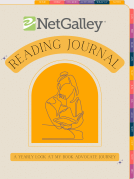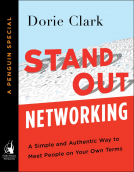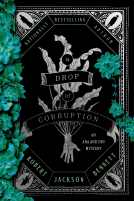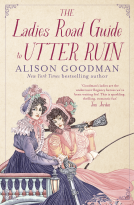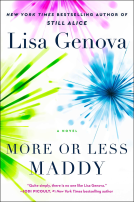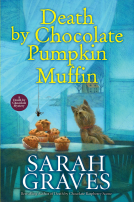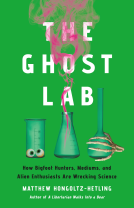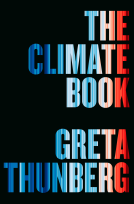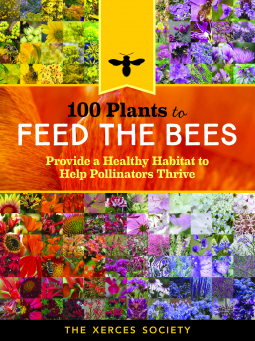
100 Plants to Feed the Bees
Provide a Healthy Habitat to Help Pollinators Thrive
by
This title was previously available on NetGalley and is now archived.
Send NetGalley books directly to your Kindle or Kindle app
1
To read on a Kindle or Kindle app, please add kindle@netgalley.com as an approved email address to receive files in your Amazon account. Click here for step-by-step instructions.
2
Also find your Kindle email address within your Amazon account, and enter it here.
Pub Date Nov 29 2016 | Archive Date Dec 27 2016
Storey Publishing | Storey Publishing, LLC
Description
Available Editions
| EDITION | Other Format |
| ISBN | 9781612127019 |
| PRICE | $18.99 (USD) |
Featured Reviews
 Reviewer 284405
Reviewer 284405
It may be winter here but 100 Plants to Feed the Bees by The Xerces Society is the perfect book for anyone dream of spring gardens. The color photographs are wonderful. Each plant is featured in several photographs with a description and map showing where the plant grows. Also included are lists of the flower visitors and uses for each. This book is a valuable reference for anyone who wishes to attract not only bees but wasps, butterflies, and hummingbirds to the garden. With 100 plants there is something for every garden!
100 Plants to Feed the Bees - Provide and Protect the Blooms That Pollinators Need to Survive and Thrive - by The Xerces Society, will be published by Storey Publishing on Dec 27th.
This one is a book plenty of great pictures, and explanations of 100 fundamental plants, flowers, shrubs, mostly native plants indispensable for bees and their wonderful honey.
Who don't love honey? Well, for having a great honey and first of all for preserving the habitat of bees, it's indispensable to prepare for them the perfect humus and the perfect...meal for their everyday summer long job.
In the book a lot of recommendations: avoid pesticides and create a genuine, beautiful, relaxing heavenly environment for bees. And for you.
Also the use of chemical sprays for sometimes parasites in plants and flowers can be dangerous for bees. It can cause their departures or profound alterations of their life in worse.
But what bees need the most? Many wildflowers. A garden plenty of colorful wildflowers, and a rich habitat.
The book after these suggestions divided in sections: Native plants, let's remember the California Poppy, prairie Clover, Salvia, Sunflower, then Native Trees and Shrubs like Acacia, Basswoods, Blackberry, Blueberry, rhododendron, Rabbit Bush, Rose, Tulip Tree, Yerba Santa.
Another section will interest Trees and Shrubs like Orange and another one Herbs and Ornamentals, so all that plants planted by men for decoration or also for... cooking. Let's think at herbs.
These plants can be perennials and annuals and they can be: basil, coriander, lavender, cosmos, rosemary, thyme....
The sections is concluded by the Native and nonnative pastures plants like Clover, mustard.
I love this book so badly. I love bees, we had bees once and there is nothing, nothing more delicious than eating real honey.
The honey of your bees.
You can buy and read this book with great confidence if you want to create a great, good fairy-tale environment to all your bees and if you also want to know the various herbs, plants, trees that exist in your immense territory. It is a great interesting trip.
Trust me.
I thank NetGalley for this book!
 Catlin P, Reviewer
Catlin P, Reviewer
Outstanding resource! Simple, easy to follow listing of bee-friendly plants. Each plant has a 2-page profile containing information about the plant (size, habitat, colors) as well as which pollinators it attracts (native bees, honeybees, moths, butterflies and hummingbirds). There is also a distribution map and information about the various species. This would be an excellent reference book for any library, particularly for patrons who are interested in adding bee-friendly plants to their gardens.
 Pamela K, Bookseller
Pamela K, Bookseller
What's not to love? This book does what it says on the tin. My partner and I love bees; so much so that our guests have stopped going through our front gate because we refuse to cut back the Jasmine bush because the bees love it. Turns out visitors don't love bees quite as much as we do! Already we've gone out and bought seeds, bulbs and saplings of some of the plants recommended in this book. Not only are they great for bees, but they'll make our garden look great as well. I hope more of these types of books come out, it's important to raise as much awareness of our environmental impact and the little steps we can take to combat it.
What a wonderful book this is. I had no idea there were so many plants out there which help to keep those wonderful bee's alive.
This is a book which should be in book form though as I prefer to flick through not click through on my kindle. I need this in book form. It really is a must. I cannot praise it enough.
Well done
 Reviewer 164035
Reviewer 164035
What first attracted me to this book was the title "100 Plants to Save the Bees". Around my house, on occasion I noticed a bee here or there that's on the ground dying. I may not like to be near them or stung by them (been there, done that), but that doesn't mean I don't appreciate the role they play in our world. Bees are highly important and I'd like to do my part to help them as much as I can.
The book dedication says it all: "To everyone who ears up their front yard to plant big chaotic wildflower gardens, to farmers who think hedgerows and wildflower field borders are just as important as crops, to guerrilla gardeners who throw native wildflower seed out of their car windows onto freeway medians".
The book contains an extensive list of wildflowers, trees, shrubs, herbs, ornamentals and pasture plants. Each plant is featured with a prominent picture, an explanation of the species, what insects it attracts, the sun exposure, the water requirements, map of where to grow(US and Canada), bloom time, color, height and uses. I find this extremely helpful, especially when looking for water-wise plants that will still attract bees and butterflies.
There are so many factors to consider when setting up a garden. While tossing wildflower seeds into the wind is one method, I prefer to plan out my design. This book would be a great asset in choosing what plants to include in my garden. I highly recommend it to passionate gardeners as well as to anyone that wants to help with the bee and butterfly populations. As a bonus, most of those plants also attract hummingbirds.
 Reviewer 373627
Reviewer 373627
This is a perfect reference book for any hobbist beekeeper who would like to know what plants attract bees in their area. Also given are many other great resources such has how many seeds per pound.
 Polly K, Reviewer
Polly K, Reviewer
From native wildflowers, trees and shrubs to introduced species of herbs and ornamental plants, this is a comprehensive guide to support our pollinators. Whether you have a tiny patio garden or an acreage, this will give you a good idea what to plant (and what not to mow down) in order to help these valuable members of our ecosystem. Recommended.
A must have for any library. What a valuable book to refer to & use.
Strengthen the eco-system! (4 stars)
When I bought my house 7+ years ago I absolutely hated how unfriendly the yard was to pollinators. There was NOTHING to support them and I've considered them to be a vital part of the eco-system since I was a small child. I've spent each spring and summer working hard to provide what they need to combat the desert that is my neighborhood. One of my biggest challenges has been living in a dry, frigid climate. This book was tremendously educational and helped me find some new options to add once the weather permits.
If you love bees as much as I do but have had similar concerns and troubles this is a great resource to tap.
 Teresa H, Reviewer
Teresa H, Reviewer
Beautiful pictures along with wonderful information to help the bees help our environment. This would be great coffee table book as well as a book of study.
 Kathleen D, Reviewer
Kathleen D, Reviewer
I love the beautiful cover on this book! I highly recommend 100 Plants to Feed the Bees to all gardeners as well as those who want to attract bees and butterflies. This book is very informative and useful.
Thank you to the Xerces Society and NetGalley for a copy of this book in exchange for an honest review.
